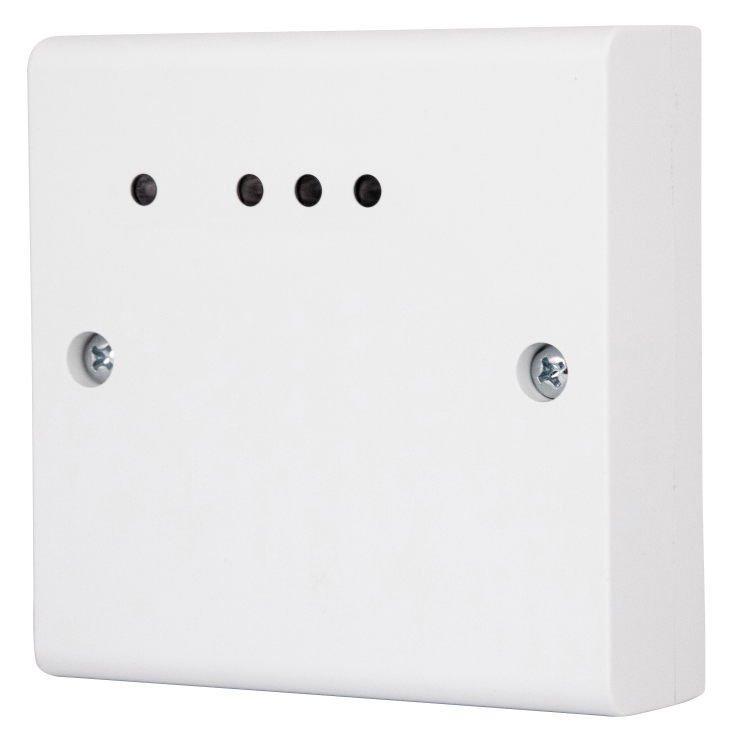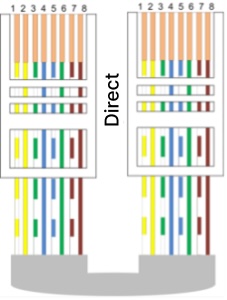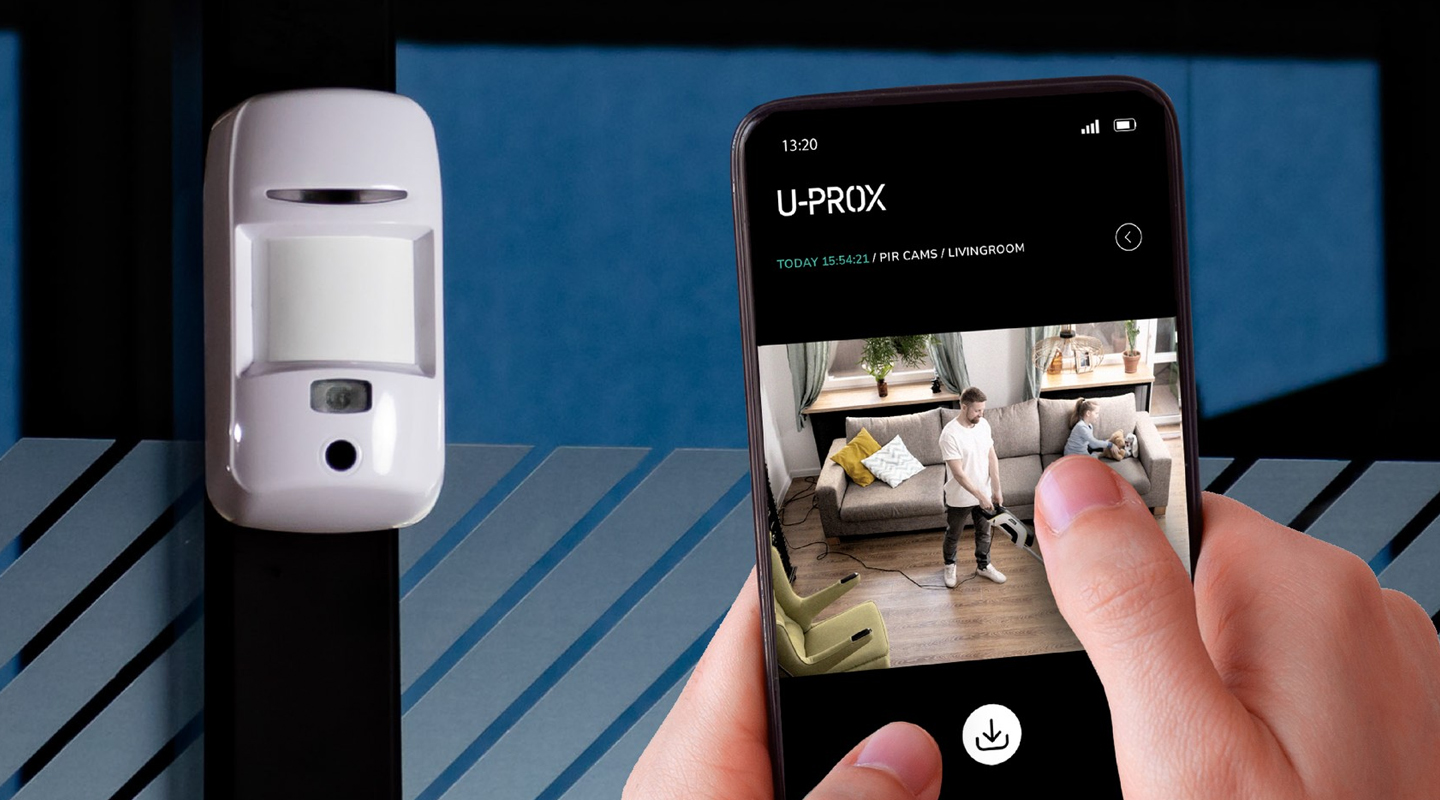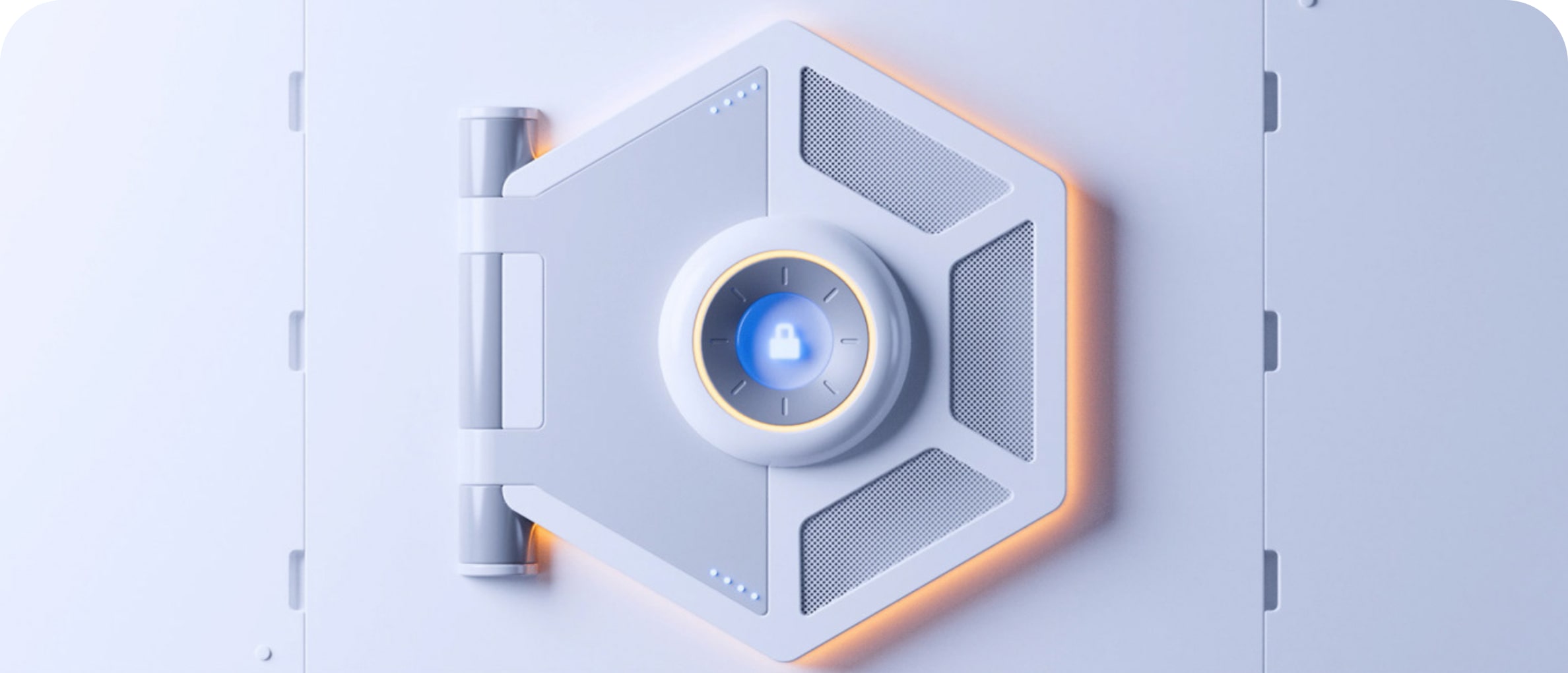U-PROX IC A
Hardware solution joined U-PROX IP400 access control panels into an one system

identifiers
events

Emergency unlocking
control panels
antipassback areas



Global AntiPassBack
AntiPassBack - prohibition of re-passage
Hardware solution
- Connecting U-PROX IP400 access control panels via a computer network
- Tracking the movement of employees
- Works in IP networks
- 32 000 cards
- up to 64 antipassback areas (rooms) and up to 255 U-PROX IP400


Tracking violations
- Re-passing,
- Using duplicated cards,
- Infiltration (unexpected appearance inside),
- Transferring the identifier to other persons
Emergency unlocking
Unlocking the doors of U-PROX IP400 control panels in case of fire alarm:
- Get fire alarm signal via one of the U-PROX IP400 control panels
- Fire alarm signal distributes over a computer network to unlock othet U-PROX IP400 control panels

NEW PRODUCTS
Want to buy?
Contact partner companies to purchase or install security and automation devices.
Want to sell?
Become an official distributor, reseller or installer of U-PROX security and safety systems.
TECHNICAL SPECIFICATIONS
| AntiPassBack areas | up to 64 |
|---|---|
| Modules | U-PROX IP400 - up to 255 |
| Connection | Ethernet 100Mbit |
| Memory |
Identifiers - 32,000 Events - 47,000 |
| Power | +10,8...+15 VDC, consumption < 150 mA @ 12V |
| Dimensions | 86.5 х 86.5 х 27.2 mm |
| Weight | 0.2 kg |
| Case colour | white |
| Case material | ABS+PC plastic |
| Operating temperature range | from 0°C to +55°C |
| Configuration | USB port for initial configuration |
| Complete set |
1. U-PROX IC A; 2. Installation kit; 3. Quick start guide |





U-PROX IC A User manual
Description
The U‑PROX IC A control panel is designed to create a global AntiPassBack system and to controlaccess to residential and industrial premises. The U-PROX IC A intellectual control panel combines all U-PROX I400 access control panels into a consolidated system.
U‑PROX IC A receives information from the U‑PROX IP400 control panels via an Ethernet (wired computer network) interface and manage users’ access.
The U‑PROX IC A performs the function of emergency door unlocking..
The control panel includes a function for programming network settings and updating its firmware via a standard USB port (micro USB B).
It is equipped with advanced hardware and intelligent functions that support operation with up to 255 devices and up to 64 AntiPassBack zones.
Purpose of the Device
The U‑PROX IC A control panel is designed to operate within access-control systems (ACS) of various scales — from small offices to large enterprises.
Technical Specifications
Power Supply: External 12V source
Current Consumption: Not more than 150 mA at 12V
DC Ripple: Not more than 500 mV
Communication with U‑PROX IP400 Controllers: Via Ethernet
USB Port: One micro USB B port for network configuration and firmware updates
Configuration: Full configuration is performed via ACS software over the computer network
Real‑time Clock
Non‑volatile Memory: Supports 32,000 identifiers and 47,000 events
Device Capacity: Up to 255 devices and 64 AntiPassBack zones
Terms
Identifiers: In access control systems, each user has a unique code. It can be plastic cards, key fobs, etc.
Reader: Devices that read codes and connect to the ACS control panel. The Wiegand, RS232 or OSDP interfaces are used.
PIN code: A code entered with the reader keypad; may function independently or as an addition to a card or key fob.
Door: An access control point (e.g., door, turnstile). Access point — a logical unit of the system.
Access point: See “Door.”
Download: The process of transferring configuration data from a computer to the control panel after programming.
AntiPassBack: A function to prevent a situation where a user passes through a controlled door and then transfers their identifier to another person. When enabled, the controller tracks the location of the identifier (inside/outside) and denies access if a repeat passage is attempted in the same direction.
Global AntiPassBack: The tracking of an identifier’s movement across all controlled access points. In a global AntiPassBack system, the object is divided into access zones(premises); entering a new zone is considered an exit from the previous one. If a repeat passage is attempted, the system denies access and issues a “Global AntiPassBack: Access Denied” message.
Description and Operation
Control panel Structure
Function of Contacts, Jumpers, and Buttons
| Name | Function |
|---|---|
| +12V | Connection for external power supply |
| GND | Ground |
| USB Port (micro B) | Used for initial network configuration and firmware updates |
| BAT
jumper
|
Enables the backup battery for clock and memory support |
| FUNC Button | Service button for resetting to factory settings |
Control panel Indication
The controller’s indicator LEDs (displayed from left to right) are as follows:
- Link LED: Lit when the Ethernet cable is functioning.
- Act LED: Blinks rapidly when data exchange is in progress.
- LED (bi‑color):
- Normal mode: Red – two short pulses per second indicate no connection to the ACS server; Green – one short pulse per second indicates normal connection.
- Loading mode: Rapid red blinking indicates the device is booting up.
Controller Operation
Control panels are supplied in an unloaded (factory) state. In this state, the bi‑color LED blinks red twice per second. To operate the controller in an ACS, network settings must be loaded with the “UProxIPConfigurator” software or by using the auto‑configuration mode.
After loading, the controller enters “Normal” mode.
The control panel can be reset either via a command from a computer or by following the procedure described in the Maintenance section.
Communicator Operation
The U‑PROX IC A control panel operates in automatic mode. After loading its configuration from the server, it processes data from authorized U‑PROX IP400 controllers participating in global AntiPassBack, handles access event notifications for presented identifiers, and sends these notifications to the ACS server.
The communicator works in notification mode – whenever an event (such as an access or zone violation) occurs, data is transmitted to the ACS server.
The U‑PROX IC A controller can be connected to a computer network via a wired Ethernet connection, supporting both local network operation and Internet connectivity.
Global AntiPassBack
The basis of global AntiPassBack is zone‑based AntiPassBack. The object is divided into rooms (premises) – access zones. In such a configuration, entering a new zone is considered exiting the previous one, and access to a zone may be possible via different doors.
The AntiPassBack controller tracks employee movements from zone to zone by receiving data from access controllers. Initially, an employee’s status is set to “Undefined” until the first presentation of an identifier to a reader, at which point the location is recorded. The “Undefined” status is assigned during new employee registration or after a “Reset” command.
Using global AntiPassBack prevents repeated passages, duplication of cards, unauthorized entry, or sharing of identifiers. (See following image for an illustration of access zone distribution.)
In cases of lost connection with the ACS controller, forced door entry, or if a door switches to free passage mode, the AntiPassBack system merges the zones, assuming personnel may be present in both. Once the door or connection is restored, the zones separate again, with the actual location determined by subsequent identifier presentations .
If communication with the U‑PROX IC A controller is lost, U‑PROX IP400 access controllers can be configured to either block all access or grant access according to locally stored personnel location data (local AntiPassBack).
Requirements for Configuring the U‑PROX IC A Controller: The controller must have a static (fixed) IP address.
Requirements for Configuring U‑PROX IP400 Controllers:
- Only controllers with double‑sided doors (entry and exit by identifier presentation) participate in global AntiPassBack.
- The first ACS server address in the device’s communication settings must be the IP address of the computer running the ACS server software.
- The second ACS server address must be that of the U‑PROX IC A control panel address.
- The ACS software must have the “General” AntiPassBack mode enabled for doors.
- The access controller must be configured with the master AntiPassBack controller and the corresponding reaction for connection loss.
U‑PROX IP400 controllers send access event notifications to two addresses simultaneously. The first address is the ACS server (for display and storage in the database), and the second is the U‑PROX IC A control panel, which replies with a command to either deny or grant access.
After presenting an identifier, the delay in granting or denying access may be up to 1 second, depending on network topology and bandwidth.
System Deployment
Using the existing network infrastructure and standard protocols (e.g., DHCP) allows the “plug‑and‑play” principle to be implemented. The auto‑configuration mode for the ACS server address in devices greatly simplifies ACS deployment.
System Deployment Procedure: (See imag)
The auto‑configuration algorithm for U‑PROX IC A is as follows:
- Upon power‑up, the controller checks whether DHCP is enabled (device IP is 0.0.0.0) or if it has obtained a static IP address.
- If DHCP is enabled, the dynamic IP address assignment procedure is initiated.
- If the ACS server address (IP or DNS name) is not set, the controller enters auto‑configuration mode:
- The device broadcasts data packets announcing itself as a new device on the local network.
- Although this broadcast is limited to the peer‑to‑peer local network and active networking equipment, in networks with complex topology the ACS server IP must be set manually.
- Upon receiving a packet from a new device, the system operator is alerted and must add the device to the database.
- Once added, the device receives a response from the ACS server. The server address is stored in the controller’s settings and the broadcast stops.
- If the server address changes, the device will auto‑configure again; however, communication will only be possible with the ACS to which it is bound.
- To unbind the controller from the ACS, reset it to factory settings.
Device operations
The control panel is supplied in a plastic housing.
Connection Procedure:
- Run the Ethernet cable.
- Connect the power supply cable (if necessary).
- Route the mounting cables within the wall.
- Mount and secure the control panel housing.
- Register the control panel in the ACS according the ACS manual
- Load the full configuration via the ACS software.
After these steps, the device is ready for operation.
Installation Recommendations
The controller should be installed in an accessible location for maintenance.
To install the controller on a wall (see image):
- Open the housing cover, remove the board, align the housing to the intended mounting location, and mark the drill holes.
- Run cables through the holes in the housing wall.
- Secure the controller housing to the wall.
- Connect all necessary cables.
Communication
For communication with the ACS server, the U‑PROX IC A controller can use a wired computer network. The device can be configured either via auto‑configuration or manually from a PC using the “Configurator” software.
When properly configured, the following is ensured:
- Assignment of a static or dynamic (DHCP) IP address to the device;
- Operation with the ACS server using an IP or DNS address;
- Internet connectivity with support for redundant routes via a secondary router.
The communicator operates in notification mode – upon occurrence of an event (access or zone violation), data is transmitted to the ACS server.
Additionally, the controller protects against unauthorized access through robust encryption (crypto‑resistance and imitation resistance) and periodic test signals for channel monitoring.
Wired Computer Network (Ethernet)
The Ethernet interface is used to network system components. Ethernet cables without additional equipment can be run up to 100 meters, with data speeds up to 100 Mbps.
Ethernet Cable Connection Examples
The following examples show direct crimping for connection to a switch or router, and crossover wiring for connection to a computer:
Direct Crimping:
|
|
 |
Crossover Wiring:
|
|
 |
During Ethernet configuration, set the following parameters:
- Device IP address (if not using DHCP)
- Subnet mask
- Gateway IP address
- DNS server IP addresses (if domain name resolution is used)
- Communication parameters with the ACS server (IP or DNS address, read/write ports, test signal frequency)
Controller Programming Procedure
Software: Use the “UProxIPConfigurator” software via the USB port to program the device.
Procedure:
- Determine the configuration mode: auto‑configuration or manual.
- If manual configuration is chosen, enter the initial network parameters:
- ACS server settings (IP or DNS name, read and write ports)
- If using DHCP, some steps may be skipped.
- Device settings (IP address, subnet mask, DNS, gateway, etc.)
- Connect and register the device in the ACS software as per its manual.
- After loading the configuration, the device is ready for operation.
Maintenance
Factory Reset
To reset the controller to factory settings, perform the following steps:
- Disconnect the power supply.
- Press and hold the FUNC button.
- Reconnect the power supply.
- Wait 10 seconds until the LED lights red, then release the FUNC button.
- The LED will flash red 6 times to indicate that the reset process is complete.
Default factory settings include:
- DHCP enabled (no static IP set for the control panelNo ACS server address specified (auto‑configuration is enabled)
Switching to Programming Mode
To enter programming mode, simply connect the controller to a computer using the USB cable. Then configure the device using the “UProxIPConfigurator” software.
Control panel firmware update
- Firstly connect the USB cable first to the PC, then connect USB cable to the control panel.
- Using the designated firmware update software, perform the update.
- After the firmware is loaded into the controller, wait 25–30 seconds before disconnecting; then the controller is ready for operation.
Warranty
The manufacturer guarantees that the U-PROX IC A control panel complies with the parameters described in this manual when properly stored and operated.
- Storage warranty period — 6 months from the date of manufacture
- Operational warranty period — 24 months from the date of commissioning
- Delivery, personnel training, installation, commissioning, and warranty service are carried out by the manufacturer or authorized organizations
- In case of a defect caused by the manufacturer, correction is performed within 10 days
- Warranty service is not provided in cases of:
- Incorrect connection,
- Failure to follow this manual,
- Mechanical damage,
- Natural disasters.
- The manufacturer reserves the right to make design modifications that do not affect key specifications or reliability.
Training and Technical Support
Training courses covering installation and usage of the U-PROX IC A control panel are conducted by “Limited Liability Company Integrated Technical Vision.” For additional information, please contact the company’s staff at the phone numbers listed below.
Technical support:
+38 (091) 481 01 69
support@u-prox.systems
https://t.me/u_prox_support_bot
This support is intended for trained specialists. End users should contact their dealers or installers before reaching out to “Limited Liability Company Integrated Technical Vision.”
Technical information is available at: www.u-prox.systems
Certification
“Limited Liability Company Integrated Technical Vision” declares that U-PROX IC A complies with the Electromagnetic Compatibility Directive 2014/30/EU and Directive 2011/65/EU (RoHS). The original Declaration of Conformity is available at www.u-prox.systems in the “Certificates” section.

Meet the new product that is already available for order - the U-PROX PIR Cam wireless motion detector.
If the detector is triggered, it will send one or a series of photos to assess the situation to the U-PROX Home mobile app and the central monitoring station of the security company. The photo will be sent only during an obvious alarm.
This detector also has the “pet immune” function, which means that it is not sensitive to the movement of animals weighing up to 20 kg and up to 1 m high.
Simple installation, easy addition to the new generation U-PROX MPX security system hub, and an unrivaled communication range with the hub allow you to find a good location in your space.
Clear photo verification of the alarm has the highest quality specifications:
- motion detection range up to 12 m
- photo resolution: 640×480, 320×240, 240×176 pixels
- infrared illumination up to 8 meters for shooting in the dark and low light
- photo transfer time up to 9 seconds.
It should also be noted that U-PROX PIR Cam uses intelligent algorithms to eliminate false alarms. This allows you to be sure that you receive notifications only in case of a real threat.
Choose the new U-PROX PIR Cam with photo verification, because clarity adds peace of mind and comfort to life!

We are very proud to announce our newest achievement - U-PROX SE series readers have successfully passed the SIA OSDP certification, confirming their reliability and security.
SIA (Security Industry Association) experts, recognized authorities in the field, have thoroughly tested and verified the compliance of U-PROX SE series readers with the standard and officially included them in the list of devices that have successfully passed OSDP v2.2 certification.
This is not just a certificate, it is a confirmation of the highest quality and unconditional compliance with the most stringent reliability and security standards in the access control industry.
What is OSDP? It is an advanced communication protocol that guarantees:
- maximum security: data is reliably protected from unauthorized access through encryption and device authentication.
- flawless operation: the access control system functions without failures, providing you with peace of mind and confidence.
- extended functionality: support for more functions than other protocols allows you to use U-PROX SE series readers in systems of any complexity and scale.
- easy integration: easy connection to OSDP-enabled controllers simplifies the process of installing and configuring your system.
From now on U-PROX SE Series readers are an investment in the future, a guarantee of reliable protection and uninterrupted operation of your next-generation access control system.
Uploads
FAQ
-
- Connect wires D0 (green) and D1 (white) with each other
- Apply power to the reader
- Connect to the reader with application U-Prox Config installed on smartphone.
- Select “Settings”
- Set a password
- Go back
- Press “Save Settings”
- Press “Disconnect”
-
The control panes is the “brain” of the system, which determines whether or not the owner of the identifier is allowed to enter the door.
It has a built-in memory that stores identifier codes with a list of access rights for each of them.
When a person presents (brings to the reader) an identifier, the code read from it is compared with the one stored in the database, on the basis of which a decision is made to open the door.
-
PACS — Physical Access Control System —an access control and management system is a set of hardware and software control and management tools.
The main goal is to restrict and register the entry-exit of objects in a given area through “points of passage”: doors, gates, etc.
The main task is to control access to a given territory (who to let in, at what time and to what territory), including also:
- restricting access to a given territory;
- identification of a person who has access to a given territory.
-
A reader is a device that reads the code (key) of the identifier and transmits it to the controller.
-
An identifier is the basic element of an access control system that stores a code.
Each client is assigned a specific key (code), which serves to determine the owner’s rights – identification.
A card, a key fob, a tag can perform the function of an identifier.
-
Areas of application have a wide range of ACS:
- company offices, business centers;
- banks;
- educational institutions (schools, technical schools, universities);
- industrial enterprises;
- protected areas;
- parking lots;
- places of passage of vehicles;
- private houses;
- residential complexes;
- cottages;
- hotels;
- public institutions (sports complexes, museums, metro, etc.)
-
Everything that is U-PROX, from the idea to the engineering implementation is done exclusively in Ukraine.
-
You can buy U-Prox equipment from our partners.
-
Open formats JSON and SOAP (XML) allow interaction between different applications, exchange data with access control systems and create applications that complement and extend the standard functionality of the U-PROX Web system.
API capabilities:
- Secure data exchange over a computer network.
- WEB service – the opportunity to interact with any platform and programming environment for SOAP and JSON protocols.
- Implementation of the user interface using the API.
- The ability to integrate with other systems and applications implemented by third-party developers.
-
U-PROX WEB provides a full range of solutions for quick installation, configuration and daily use of IP ACS by enterprises of any size, from a small office to a large company with many branches.
U-PROX Web has a full-featured web interface with fine-tuning of all ACS capabilities and provides the ability to monitor events, configure equipment, manage personnel access, and generate reports.
















